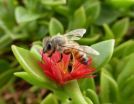(Press-News.org) TORONTO, April 17, 2014—While 94 per cent of Canadians surveyed said they would participate in public health programs that screen newborns for a specific number of genetic conditions, only 80 per cent said they would be willing to participate in screening that would sequence their newborns' genomes.
Most newborns in North America have a "heel prick test" in their first day or two of life in which a tiny amount of blood is taken from their heels and tested for about five to 54 conditions, depending on the state or province. Some conditions commonly tested for include cystic fibrosis, the enzyme deficiency phenylketonuria or PKU, and hypothyroidism, a thyroid hormone deficiency.
The idea is to identify and treat diseases before irreversible damage has occurred to prevent or reduce developmental, neurological or other health issues. These public health measures are not mandatory, but parental consent is typically implied because newborn screening is considered the standard of care.
Dr. Yvonne Bombard, a genomics and health services researcher in the Li Ka Shing Knowledge Institute of St. Michael's Hospital and an assistant professor at the University of Toronto's Institute of Health Policy, Management and Evaluation, said technology has evolved to the point where we could now scan a baby's entire DNA sequence – not just conditions that can be treated in infancy, but such things as whether the baby carries the BRCA1 or BRCA2 genes associated with breast and ovarian cancer or has a genetic predisposition to Alzheimer's.
"Where do we draw the line on what we screen for?" she asked. "Public opinion should matter when we make these decisions. Newborn screening programs require almost 100 per cent participation to be effective and if we lose people's trust, people may opt out."
Dr. Bombard explores those issues in a paper published in the European Journal of Human Genetics.
She and other researchers conducted an online public survey that found 94 per cent of respondents would be willing to participate in newborn screening using existing technologies the screen for specific genetic conditions that can be treated in childhood versus 80 per cent who would participate in screening that would sequence their newborns' genomes for any and all forms of disease. Much smaller numbers thought it was a parent's responsibility to participate in newborn screening programs (48 per cent for existing technology and 30 per cent for whole genome sequencing).
Dr. Bombard said some of the issues around sequencing newborns' genomes include freedom of choice and the danger of over diagnosis.
"Does whole genome sequencing take away a child's choice to remain unaware of his or her future health risks?" she asked. "It could also generate a lot of genetic information that we don't understand. For example, there are genetic variants in the cystic fibrosis gene that are not known to be associated with cystic fibrosis. What do we do about that information? Monitor the child? Overtreat the child? Are these added harms that we are introducing into this screening program that may challenge its authority to continue to identify and treat the affected infants?"
"We can filter out what we look at in a genome. That is, we can type the whole book but don't have to read every sentence. But as a public health program we don't have the capacity to give parents a menu of options and ask them what type of health information they want to select to learn about in their children, so it's important that the public understand this new technology and its potential limitations so we can draw an appropriate line on what we screen for in these newborns."
"It's essential that we respond to technological developments with a full understanding of the needs of newborns, children and their families," said Fiona A. Miller, the study's principal investigator and associate professor in U of T's Institute of Health Policy, Management and Evaluation , noting that the study highlights the need for newborn screening policies that are informed by a range of stakeholders, not special interest groups exclusively.
"When we decide that it makes sense to screen for a particular condition in a newborn, we need to ensure that the whole system works to maximize benefits and minimize harms. As well, we need to invest in the care that can be of greatest value to children and their families."
INFORMATION:
This study received funding from the Canadian Institutes for Health Research.
About St. Michael's Hospital
St Michael's Hospital provides compassionate care to all who enter its doors. The hospital also provides outstanding medical education to future health care professionals in 27 academic disciplines. Critical care and trauma, heart disease, neurosurgery, diabetes, cancer care, care of the homeless and global health are among the hospital's recognized areas of expertise. Through the Keenan Research Centre and the Li Ka Shing International Healthcare Education Centre, which make up the Li Ka Shing Knowledge Institute, research and education at St. Michael's Hospital are recognized and make an impact around the world. Founded in 1892, the hospital is fully affiliated with the University of Toronto.
Media contacts
For more information, or to arrange an interview with Dr. Bombard, contact:
Leslie Shepherd
Manager, Media Strategy
St. Michael's Hospital
416-864-6094
shepherdl@smh.ca
Inspired Care. Inspiring Science.
http://www.stmichaelshospital.com
Follow us on Twitter: http://www.twitter.com/stmikeshospital
To arrange an interview with Professor Miller, contact
Nicole Bodnar
Director of Communications
Dalla Lana School of Public Health, University of Toronto
416-946-7521
Nicole.bodnar@utoronto.ca
Researcher looks at public perceptions around newborn testing
Some of the issues around sequencing newborns' genomes include freedom of choice and the danger of over diagnosis
2014-04-17
ELSE PRESS RELEASES FROM THIS DATE:
Adrenaline does little to increase patient's survival after cardiac arrest
2014-04-17
TORONTO, April 17, 2014— Giving patients adrenaline after they suffer a cardiac arrest outside of a hospital does not increase their prospects of surviving long-term, according to new research conducted at St. Michael's Hospital.
"The vast number of patients who have a cardiac arrest get adrenaline, which has been the drug recommended in treating cardiac arrest for decades," said Dr. Steve Lin, an emergency physician and trauma team leader at St. Michael's. "Yet, despite advances in medical treatment, long-term survival rates of patients who suffer a cardiac outside a ...
Animal study provides first evidence that gel can prevent multiple virus transmission in vagina/rectum
2014-04-17
NEW YORK (17 April 2014)— Population Council scientists and their partners have found that their proprietary microbicide gel is safe, stable, and can prevent the transmission of multiple sexually transmitted infections (STIs) in both the vagina and rectum in animals: HIV, herpes simplex virus 2 (HSV-2), and human papillomavirus (HPV). The USAID-funded study also provides the first data that the gel is effective against multiple strains of HIV, and has a window of efficacy in the vagina against all three viruses of at least eight hours prior to exposure. A Phase 1 safety ...
Wireless power transfer achieved at 5-meter distance
2014-04-17
Daejeon, Republic of Korea, April 17, 2014 – The way electronic devices receive their power has changed tremendously over the past few decades, from wired to non-wired. Users today enjoy all kinds of wireless electronic gadgets including cell phones, mobile displays, tablet PCs, and even batteries. The Internet has also shifted from wired to wireless. Now, researchers and engineers are trying to remove the last remaining wires altogether by developing wireless power transfer technology.
Chun T. Rim, a professor of Nuclear & Quantum Engineering at KAIST, and his team ...
Fear of the cuckoo mafia
2014-04-17
This news release is available in German. If a restaurant owner fails to pay the protection money demanded of him, he can expect his premises to be trashed. Warnings like these are seldom required, however, as fear of the consequences is enough to make restaurant owners pay up. Similarly, mafia-like behaviour is observed in parasitic birds, which lay their eggs in other birds' nests. If the host birds throw the cuckoo's egg out, the brood parasites take their revenge by destroying the entire nest. Consequently, it is beneficial for hosts to be capable of learning and ...
East African honeybees are safe from invasive pests… for now
2014-04-17
Several parasites and pathogens that devastate honeybees in Europe, Asia and the United States are spreading across East Africa, but do not appear to be impacting native honeybee populations at this time, according to an international team of researchers.
The invasive pests include including Nosema microsporidia and Varroa mites.
"Our East African honeybees appear to be resilient to these invasive pests, which suggests to us that the chemicals used to control pests in Europe, Asia and the United States currently are not necessary in East Africa," said Elliud Muli, senior ...
Drought and fire in the Amazon lead to sharp increases in forest tree mortality
2014-04-17
Ongoing deforestation and fragmentation of forests in the Amazon help create tinderbox conditions for wildfires in remnant forests, contributing to rapid and widespread forest loss during drought years, according to a team of researchers.
The findings show that forests in the Amazon could reach a "tipping point" when severe droughts coupled with forest fires lead to large-scale loss of trees, making recovery more difficult, said Jennifer Balch, assistant professor of geography, Penn State.
"We documented one of the highest tree mortality rates witnessed in Amazon forests," ...
Classifying cognitive styles across disciplines
2014-04-17
Educators have tried to boost learning by focusing on differences in learning styles. Management consultants tout the impact that different decision-making styles have on productivity. Various fields have developed diverse approaches to understanding the way people process information. A new report from psychological scientists aims to integrate these disciplines by offering a new, integrated framework of cognitive styles that bridges different terminologies, concepts, and approaches.
"This new taxonomy of cognitive styles offers a clear categorization of different types ...
Unraveling the 'black ribbon' around lung cancer
2014-04-17
It's not uncommon these days to find a colored ribbon representing a disease. A pink ribbon is well known to signify breast cancer. But what color ribbon does one think of with lung cancer?
Although white has been identified as the designated color, for many suffering from the disease, black may be the only one they think fits.
A Michigan State University study consisting of lung cancer patients, primarily smokers between the ages of 51 to 79 years old, is shedding more light on the stigma often felt by these patients, the emotional toll it can have and how health providers ...
Some immune cells defend only 1 organ
2014-04-17
Scientists have uncovered a new way the immune system may fight cancers and viral infections. The finding could aid efforts to use immune cells to treat illness.
The research, in mice, suggests that some organs have the immunological equivalent of "neighborhood police" – specialized squads of defenders that patrol only one area, a single organ, instead of an entire city, the body.
Scientists at Washington University School of Medicine in St. Louis have shown that the liver, skin and uterus each has dedicated immune cells, which they call tissue-resident natural killer ...
Deaths from viral hepatitis surpasses HIV/AIDS as preventable cause of deaths in Australia
2014-04-17
The analysis was conducted by Dr Benjamin Cowie and Ms Jennifer MacLachlan from the University of Melbourne and Melbourne Health, and was presented at The International Liver Congress in London earlier this month.
"Liver cancer is the fastest increasing cause of cancer deaths in Australia, increasing each year by 5 per cent, so by more than seventy people each year. In 2014 there was an estimated number of deaths of around 1,500 from liver cancer. The predominant cause is chronic viral Hepatitis," Dr Cowie said.
Hepatitis refers to the inflammation of the liver. Chronic ...
LAST 30 PRESS RELEASES:
Maternity baby deaths much higher in northern England than in the South
Mosquitoes’ thirst for human blood has increased as biodiversity loss worsens
The stop-smoking medication varenicline may also work for cannabis use disorder
Potential new treatment for sepsis
Study reveals how many hours of video games per week might be too many
Electrospinning for mimicking bioelectric microenvironment in tissue regeneration
Home fingertip oxygen monitors less accurate for people with darker skin tones
Six weeks in a cast no less effective than surgery for unstable ankle fractures
Precautionary approach to alcohol-free and low alcohol drinks needed to protect public health, say experts
Gas-atomized Ca–Mg alloy powders produce hydrogen simply by adding water — high-efficiency hydrogen generation at room temperature
British redcoat’s lost memoir reveals harsh realities of life as a disabled veteran
World-leading rare earth magnet recycling facility launches in UK
Corday Selden selected for the Oceanography Society Early Career Award
MIT chemists determine the structure of the fuzzy coat that surrounds Tau proteins
Same moves, different terrain: How bacteria navigate complex environments without changing their playbook
Severe weather is deadly for vulnerable older adults long after the storm ends, study finds
Expert panel highlights opportunities for improving cancer studies
Hearing aid prescriptions not associated with changes in memory and thinking
Seth Zippel selected for The Oceanography Society Early Career Award
Jeremy Horowitz selected for The Oceanography Society Early Career Award
Kennesaw State University’s Jerry Mack named Paul “Bear” Bryant Newcomer Coach of the Year
Ancient teeth are treasure troves of data on Iron Age lifestyles
Avocados may become easier to grow in India—but not if global emissions remain high
Pregnant women with IBD show heightened inflammation in vaginal mucosa
Underwater photos show seabirds, seals and fish interacting with a tidal turbine in Washington State
1 in 5 surveyed UK adults who have experienced the death of a pet report it as more distressing than experienced human deaths, with significant rates of prolonged grief disorder symptoms also being re
Polyester microfibers in soil negatively impact the development of cherry tomato plants in experiments, raising concerns over the potential effect of high levels of such contaminants
LGBTQ+ adults may be around twice as likely to be unemployed or to report workforce non-participation compared to heterosexual adults, per large representative Australian survey
Horses can smell fear: In experiments where horses smelled sweat from scared humans, they reacted to scary and sudden events with increased fear and reduced human interaction
New synaptic formation in adolescence challenges conventional views of brain development
[Press-News.org] Researcher looks at public perceptions around newborn testingSome of the issues around sequencing newborns' genomes include freedom of choice and the danger of over diagnosis






